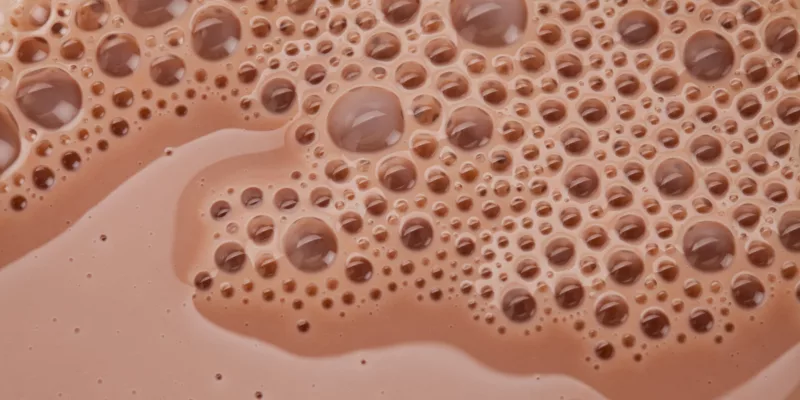
Carrageenan (407/407a) is used for gelling, thickening & suspension. Kappa and Iota carrageenan's form heat reversible gels and lambda is used for its thickening properties.
Application
| Application | Function |
|---|---|
| Chocolate milk | Cocoa suspension and mouth feel. |
| Ham injection | Improve succulence, yield and slice ability. |
| Nappage | Provides a transparent flexible glaze that eliminates syneresis. |
| Hot fill dairy dessert | Gelling agent and syneresis control. Provides body and creaminess. |
| Instant mousse | Viscosity control, improves foam structure and body. |
| Thickened milk drinks | Suspends insoluble materials, improves mouthfeel and helps stabilise emulsions. |
| Oil free dressings | Suspends particulates, improves texture and mouth feel. |
| Ice Cream & Sorbet | Whey off protection. Texture modification. Viscosity control. |
| Flans | Gelling agent and syneresis control. |
| Processed cheese | Gelling agent. Allows reduction in dairy protein levels. Cost reduction. |
| Ground meat emulsions | Improves succulence and yield. Prevents shrinkage upon cooking. |
Chemistry
Carrageenans (E407) are a family of linear, sulphated polysaccharides extracted from red seaweeds. The name is derived from the west coast of Ireland where the Irish moss seaweed (Chondrus Crispus) is known as Carragheen. Gelatinous extracts of carrageen seaweed have been used as food additives for hundreds of years.
There are three main commercial classes of carrageenan:
- Kappa – strong, rigid gels
- Iota – soft gels
- Lambda – form gels when mixed with proteins rather than water, used to thicken dairy products.
All are soluble in hot water, but in cold water only the Lambda form (and the sodium salts of the other two) are soluble. When used in food products, carrageenan has the EU additive E-number E407.
Properties
Carrageenans are large, highly flexible molecules which curl forming helical structures. This gives them the ability to form a variety of different gels at room temperature. They are widely used in the food industry as thickening and stabilising agents. A particular advantage is that they are thixotropic-they thin under shear stress and recover their viscosity once the stress is removed. This means that they are easy to pump but stiffen again afterwards.
Kappa carrageenan is potassium-sensitive and will form strong brittle, thermo-reversible gels in the presence of potassium ions. Calcium and most polyvalent ions will induce gelation to a lesser extent, while the sodium salt is non-gelling and cold water-soluble. All other salts of Kappa carrageenan need to be heated above 50°C, generally to 80°C, to ensure complete dissolution. The gels are generally clear but calcium ions product slight cloudiness. Kappa carrageenan gels do exhibit some syneresis, and are not freeze/thaw stable. Kappa carrageenan will produce strong milk gels at very low levels (i.e. 0.05 – 0.2% w/w).
Iota carrageenan forms transparent elastic thermo-reversible gels in the presence of calcium ions. Without the ions, considerable thickening occurs. All salts of iota carrageenan are soluble in cold water and milk and are freeze/thaw stable. The gels do not exhibit syneresis.
Lambda carrageenan does not gel in water or milk but it produces considerable thickening in milk and will stabilise both water and milk systems. It is cold water-soluble, thickening immediately to give a clear viscous solution.
The above three types of carageenan are usually blended and many of the available grades contain various additives to alter the physical properties for specific uses. In particular, locust bean gum is used to modify Kappa carrageenan, increasing the elasticity, cohesion and breaking strength of the gel.
